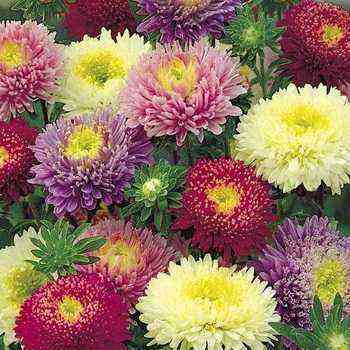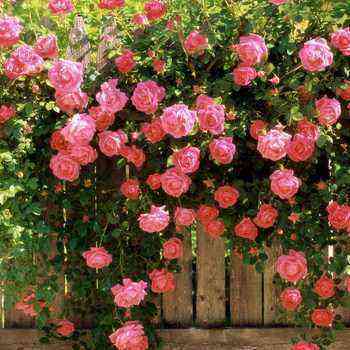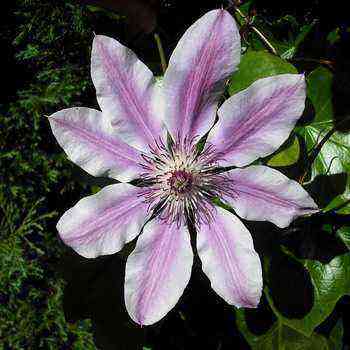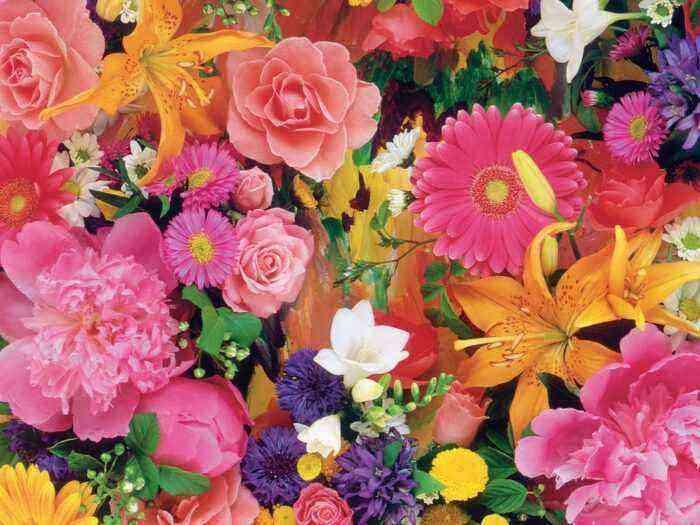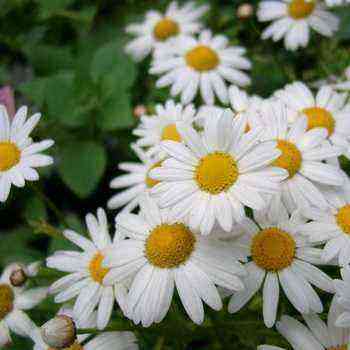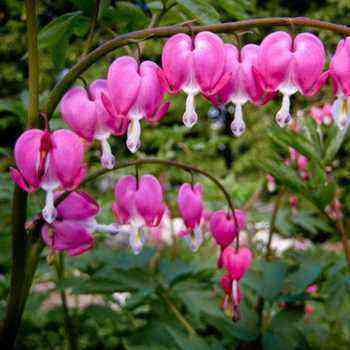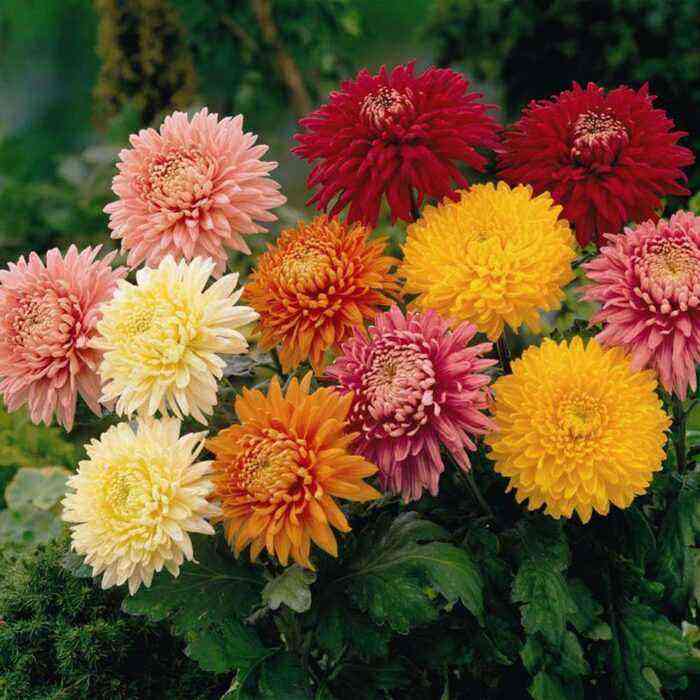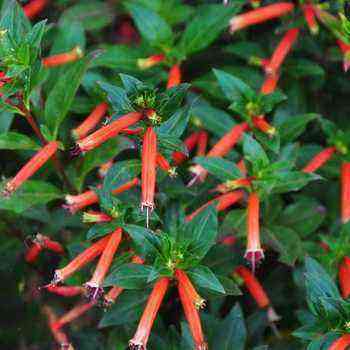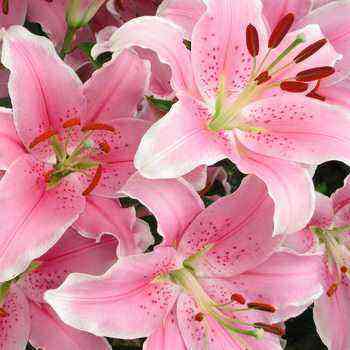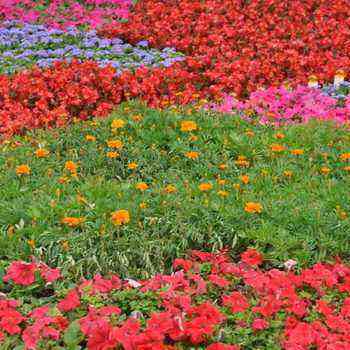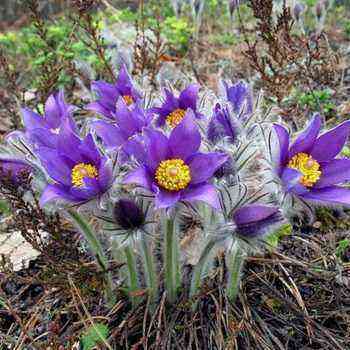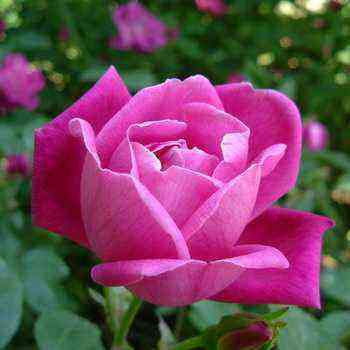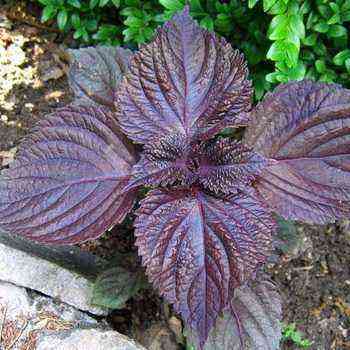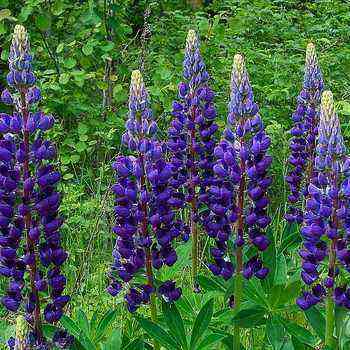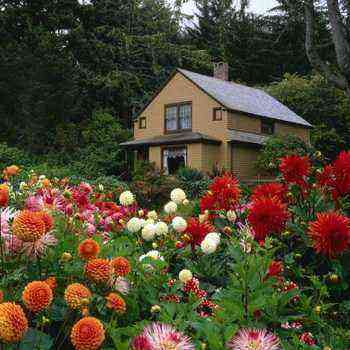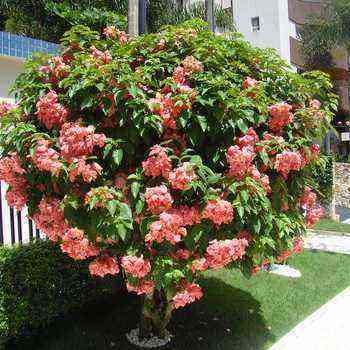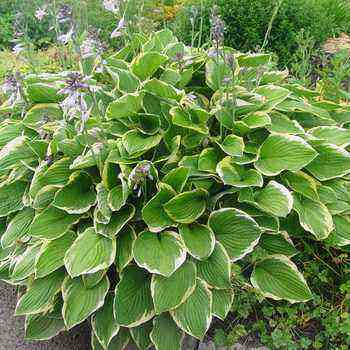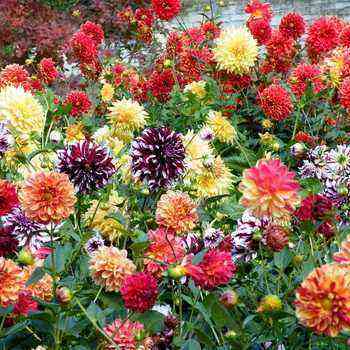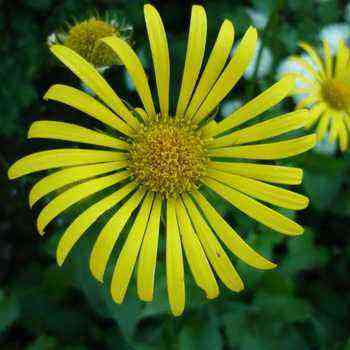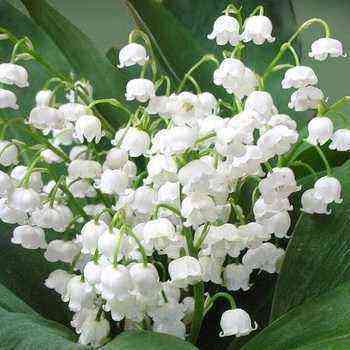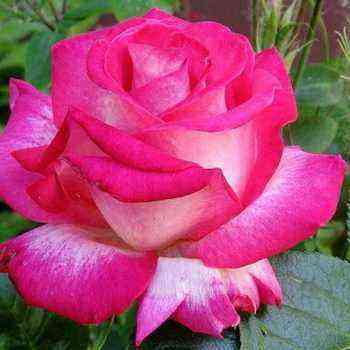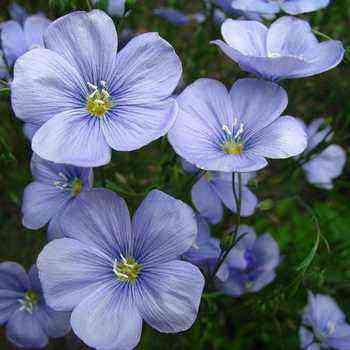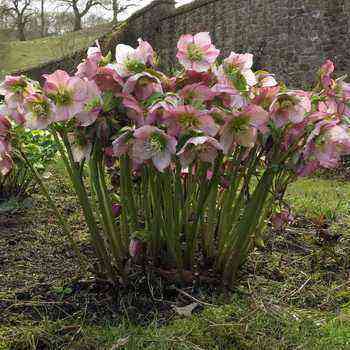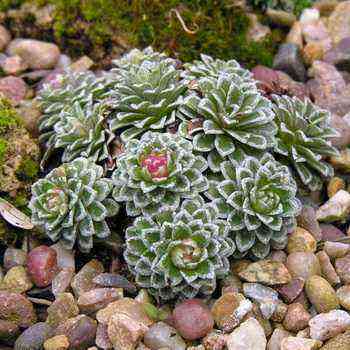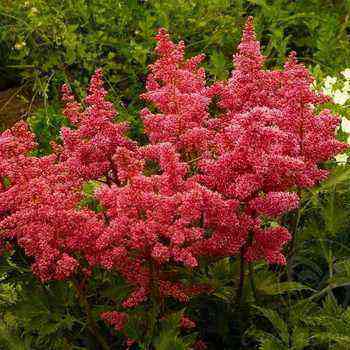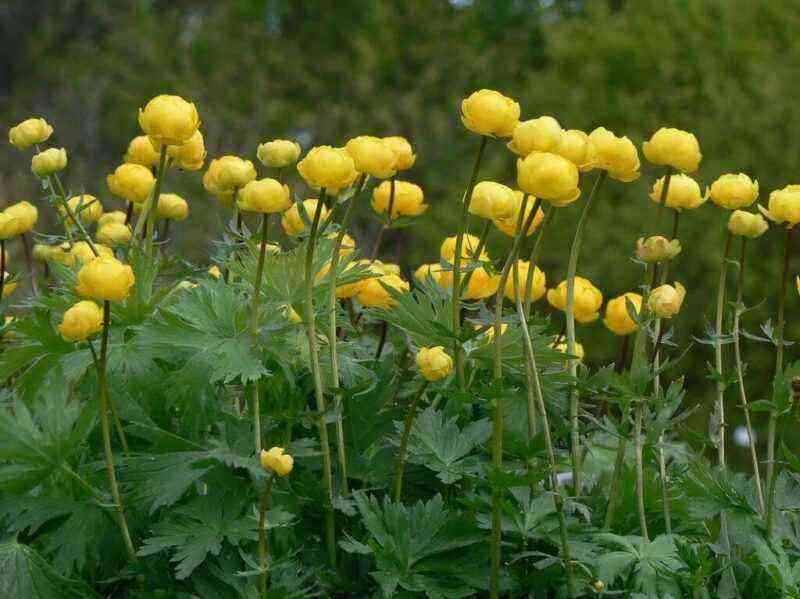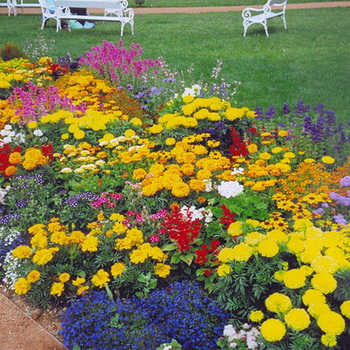 The flowering time of plants must be observed in order for your garden plot to look decorative all season. Knowing which plants bloom in summer, and which ones in spring or autumn, you can plant them in mixed groups in such a way that one replaces the other, and then your flower bed will not lose its attractiveness from the moment the snow melts until a new one falls.
The flowering time of plants must be observed in order for your garden plot to look decorative all season. Knowing which plants bloom in summer, and which ones in spring or autumn, you can plant them in mixed groups in such a way that one replaces the other, and then your flower bed will not lose its attractiveness from the moment the snow melts until a new one falls.
By the timing of flowering, it is customary to divide perennials into spring flowering ones (they bloom from snow melt to mid-May); spring-summer (mid-May – mid-June); summer (mid-June – mid-August) and summer-autumn (mid-August – before frost).
Establishing the exact timing of flowering of plants is a thankless task, since these dates depend on weather conditions, but the sequence of flowering of different crops and their attachment to a particular season persists in different years.
For each culture (genus) the following data are provided:
- The name of the genus in Russian and in Latin (and their synonyms), since different spellings are possible in different reference books and catalogs;
- The name of the family to which the genus belongs. In some cases, two names are given: modern and old (in brackets);
- Brief description of the genus with indication of origin;
- The section “Composition” mentions the most frequently cultivated species and varieties of this genus;
- Recommendations are given on the growing conditions of the recommended plants;
- The breeding methods of perennials are briefly reported;
Information about the ways of using plants is given and in some cases the peculiarities of their behavior are emphasized.
The brevity of the presentation is supplemented by illustrative material. The appearance of the plant is reflected in the graphic drawing and color photography; growing conditions and methods of use are expressed in international pictograms. Important information for the gardener is contained in the color spectrum of flowers and the seasonal development of the plant. The latter shows the timing of flowering and the duration of the growing season.
Spring flowering and spring-summer perennials
Spring-flowering plants are distinguished by the greatest variability both in terms of flowering time and in flowering duration, since both depend on the vagaries of spring weather. They are distinguished by low growth, small flowers, predominance of pastel colors in color (except for varieties) and a very short decorative period.
A large number of species and varieties belong to spring-summer perennials. They differ in a variety of colors, flower sizes, flowering duration. The end of May – the beginning of June is a colorful, bright period on perennial flower beds.
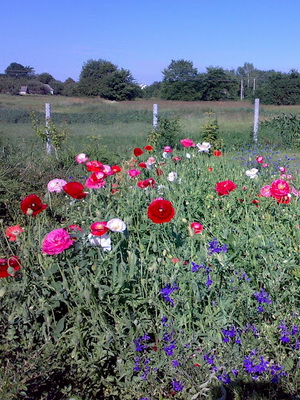
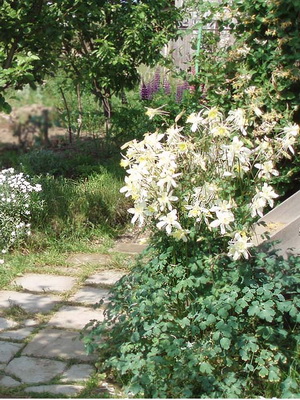
Poppies, aquilegia, doronicum, feverfew are pleasing to the eye. But there are especially many flowering plants in the shade. At this time it is already warm, but there is still a lot of moisture in the soil, a long day and short nights. In shady flower beds, blue colors predominate – forget-me-not, omphalodes, periwinkle, brunner, tenacious bloom. They are shaded by white flowers of lily of the valley, kupena, onions, tiarca, podophyllum. Species of yellow lilies bloom. The inflorescences of ariem and arum are exotic. Forest peonies (white, yellow, pink) bloom, multi-colored primroses fade. Popular plants blooming in early summer (in June) in sunny flower beds are white cornflower, yellow doronicum, pink pyrethrum, red oriental poppy.
Perennial plants blooming all summer
Most light-loving species belong to the group of perennial plants that bloom all summer. Among them are tall and undersized, of all colors and different duration of flowering, almost all cereals. At the beginning of the season, such widespread crops as hybrid iris and hybrid peony bloom. The variety of varieties, the duration of flowering deservedly make these crops the favorites of flower growers.
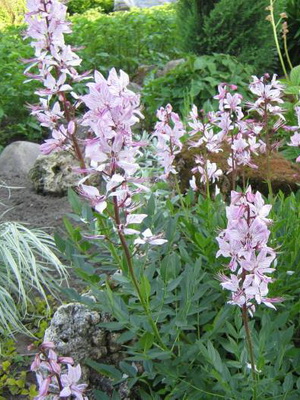
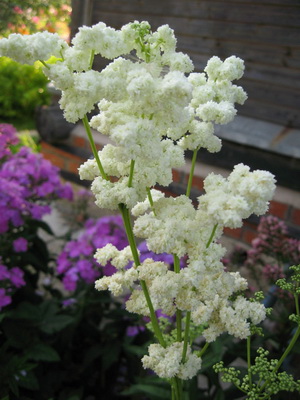
Fragrant ash trees and meadowsweets attract attention in June, delphiniums bloom. June is the time of flowering of swimsuits and the highlander “Cancer Neck”, they create a wonderful duet of yellow and pink.
Magnificent meadow herbs – geraniums, cornflowers, gravilat, aquilegia, veronica.
July and early August – the kingdom of phlox, lilies, heuchera, monarda, carnations, cinquefoil, lyatrice, varietal daylilies bloom. This is the time of flowering of most rocky species: rejuvenated, stonecrop, sunflower, Karatav onion and many others. In shady areas, flowering is almost over, only aconites, astilba, spotted loosestrife, blood-red geranium, elecampane are magnificent, Manchurian saxifrage, red meadowsweet, beautiful telekia, hosta are blooming.
Perennial plants blooming in autumn
The end of summer – the beginning of autumn is the time of flowering of lush chrysanthemums and dahlias, tall gladioli and echinacea, numerous “yellow flowers” – rudbeckia, Gaillardia, goldenrods, sunflowers, heleniums.
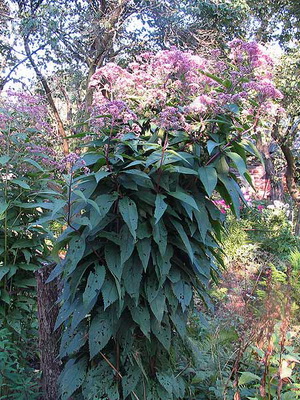
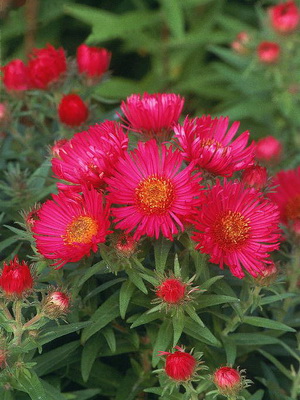
The most common plants blooming in autumn are large bush, New England and New Belgian asters. The bushes of miscanthus and black cohosh emphasize the beauty of these plants.
It is at the end of summer – beginning of autumn that the tallest, most powerful plants bloom, which are often the background in mixborders and the center in flower beds. Also, perennials blooming in autumn are such labor-intensive crops as dahlias, gladioli, chrysanthemums. In autumn, flowering is usually interrupted by frost, but in warm autumn periods, flower beds can be pleasing to the eye until November. The author does not provide lists of plants that bloom in summer and autumn, since the next chapter gives the flowering spectrum of all the plants described.
